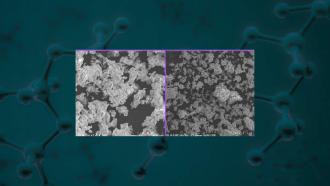
Researchers from Indian Institute of Technology Indore, Indore have developed shape controlled cobalt ferrite nanoparticles, which can be used to accurately measure the humidity of a region.
Humidity denotes the amount of water vapour in the atmosphere. Apart from affecting the climate of a region by affecting factors like dew, precipitation and fog, humidity in a region can also affect life. Humans and other animals which uses sweating as a means to control body temperature are affected as high humidity could reduce the amount of sweat produced, and thus affects our ability to effectively manage our body heat. South and Southeast Asia are among the most humid places, with many coastal areas in these regions recording the highest humidity values, due to their proximity to large bodies of water. Humidity in an area could also mean bad news to our electronic devices, leading to corrosion and other defects as a result of water vapour interacting with the electronics of a device. All these factors have led to a huge interest in accurate humidity sensors and humidity controllers.
In their latest research, scientist from IIT Indore developed shape controlled cobalt ferrite (CoFe2O4) nanoparticles (NP) and tested its ability to sense the humidity of a region. Cobalt ferrite NPs have emerged as suitable candidates for a number of technological applications like biosensors, gas sensors, magnetic recording media etc, due to their inherent magnetic, electrical, and mechanical properties along with high chemical stability.
For their study, the researchers used a solution method to produce the nanoparticles, which allowed greater control over the shape of the final product. By controlling the reaction time and amount of solvent, the researchers produced three types of NPs—spherical, cubic and hexagonal NPs for this study. They then tested the humidity sensing ability of all three types over a broad humidity range of 8-97% at room temperature. A high resolution transmission electron microscope (HRTEM) was used to validate the morphology and size of the three types of NPs, with the size varying between 23.5 to 25 nanometers.
The results suggest the morphology of the NPs playing an important role in the sensing ability of the NPs, with the hexagonal cobalt ferrite NPs displaying the highest humidity sensitivity value and good response and recovery time, among the three shapes. The team also provided a theoretical basis for the humidity sensing of cobalt ferrite using Freundlich adsorption isotherm model.
According to the researchers “the morphology-dependent humidity sensing performance of cobalt ferrite NPs indicates that they are most suitable for room temperature-based next-generation high-performance humidity sensors”






